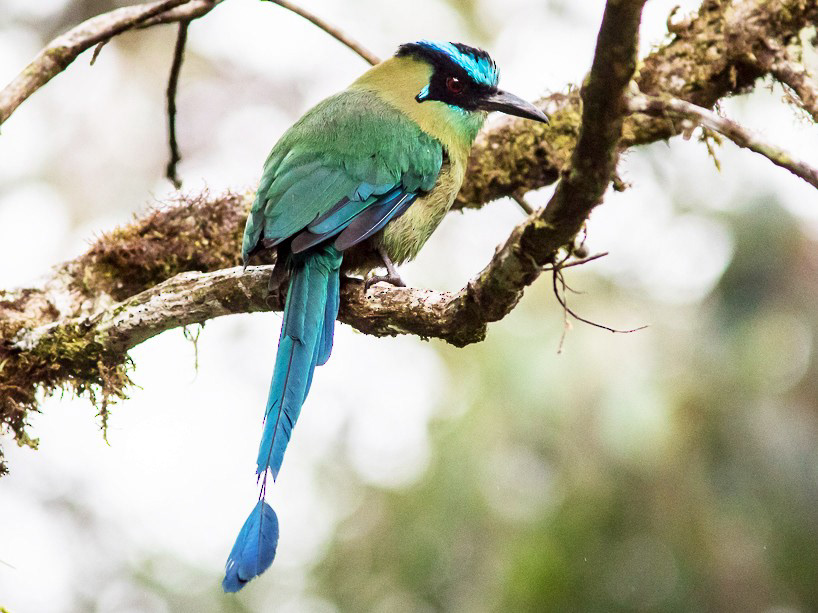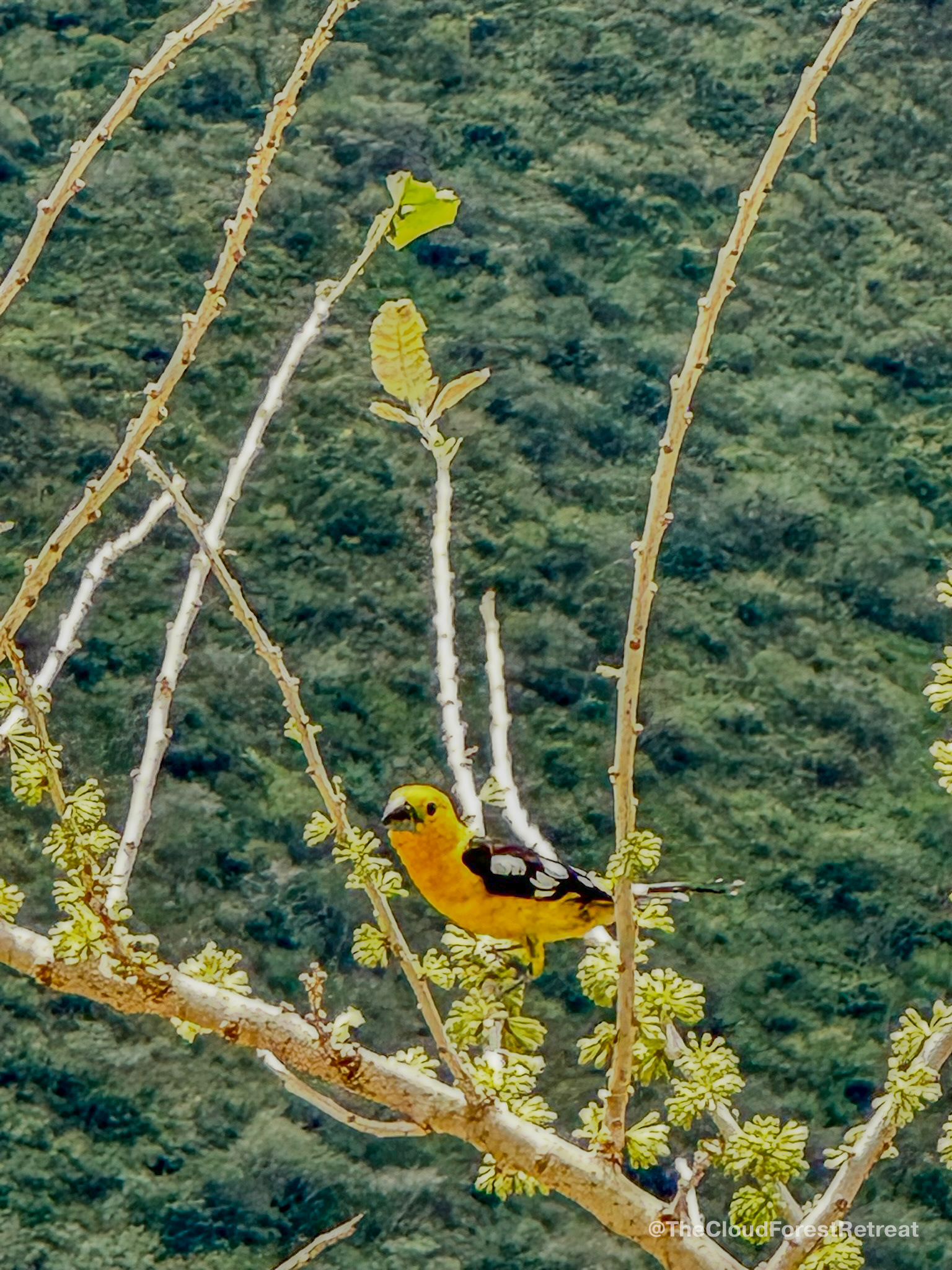
Andean Motmot (Momotus aequatorialis): This bird is known for its distinctive blue-green plumage and long, racket-shaped tail feathers. They can be found in the cloud forests of the reserve and are often seen perched on tree branches.

Andean Condor (Vultur gryphus): This majestic bird is one of the largest birds of prey in the world and can have a wingspan of up to 3 meters. They can be seen soaring high in the Andean skies above the reserve.

White-lined Tanager

Yellow Grosbeak

Yellow Grosbeak

Yellow Grosbeak

Yellow Grosbeak

Golden Tanager

White-winged Tanager

Ramphocelus flammigerus

Cinnyris

Scrub Tanager

Great Crested Flycatcher


Lonchura
Animals that have hair or fur, mammary glands to nurse their young, and three middle ear bones. Examples include bears, elephants, whales, and humans. Animales que tienen pelo o pelaje, glándulas mamarias para amamantar a sus crías y tres huesos del oído medio. Ejemplos incluyen osos, elefantes, ballenas y humanos.

A kinkajou, also known as honey bear, is a small nocturnal mammal species native to Central and South America, including parts of Ecuador. They are arboreal animals and spend most of their time in trees, using their prehensile tail to grasp branches and climb. Kinkajous have a distinctive appearance, with a long, slender body, soft fur, and a small head. They have sharp claws and teeth, which they use to climb trees and to eat their diet of fruit, nectar, and small animals such as insects and small rodents. Kinkajous are known for their ability to rotate their ankles backwards, allowing them to climb down trees headfirst with ease. They are also known for their loud vocalizations, which include barks, screams, and grunts. Kinkajous are often kept as exotic pets, although this practice is illegal in many countries due to the animal's specialized needs and their potential as carriers of zoonotic diseases. In the wild, kinkajous are not considered to be endangered, but they are threatened by habitat loss and hunting.

The Conejo andino, also known as the Andean rabbit or Andean cottontail, is a species of rabbit that is found in the Andean highlands of Ecuador and other parts of South America. These rabbits have a brownish-gray fur coat and distinctive long ears. They are herbivorous and feed on a variety of plants and grasses found in their mountainous habitat. The Andean rabbit is a solitary animal, and spends much of its time hiding in burrows or under rocks to avoid predators such as foxes, pumas, and birds of prey. The Andean rabbit is classified as a vulnerable species, with populations declining due to habitat loss and hunting. Conservation efforts are being made to protect their habitat and raise awareness about the importance of their conservation. The Andean rabbit is considered an important indicator of the health of the Andean highland ecosystem, and efforts to protect this species can benefit many other species in the region.

The Ardilla roja amazónica norteña, also known as the northern Amazon red squirrel, is a squirrel species found in the Amazon rainforest in Ecuador and other parts of South America. These squirrels have a reddish-brown fur coat and a long, bushy tail that they use for balance and communication. They are arboreal animals, spending most of their time in trees, where they forage for fruits, nuts, seeds, and insects. The northern Amazon red squirrel plays an important role in the rainforest ecosystem as a seed disperser, helping to spread the seeds of the fruits and nuts that they consume. They are also prey for a variety of predators, including birds of prey, snakes, and wild cats. The northern Amazon red squirrel is not currently considered to be threatened or endangered, but like many species in the Amazon rainforest, their habitat is threatened by deforestation and other forms of human development. Conservation efforts are being made to protect the rainforest and the many species, including the northern Amazon red squirrel, that call it home.

The Zorro Andino, also known as the Andean fox or culpeo, is a fox species that is found throughout much of South America, including Ecuador. In Ecuador, the Andean fox is found in the Andean mountain range and the páramo grasslands. They have a distinctive reddish-brown fur coat and a bushy tail, which they use for balance and warmth in cold environments. Andean foxes are omnivorous, with a diet that includes small mammals, birds, insects, and fruits. They are also known to scavenge on carrion and have been observed hunting domestic livestock, which has led to conflicts with local farmers. The Andean fox is an important predator in its ecosystem, controlling the population of rodents and other small mammals. They are also important prey for larger predators such as pumas and Andean condors. In Ecuador, the Andean fox is classified as a species of least concern by the International Union for Conservation of Nature (IUCN), but their populations are threatened by habitat loss and hunting. Conservation efforts are being made to protect their habitat and reduce human-wildlife conflicts.

Pumas, also known as mountain lions or cougars, are found in various habitats throughout Ecuador, including the Andes Mountains, Amazon rainforest, and coastal regions. In Ecuador, pumas are classified as a vulnerable species, as their populations have declined due to habitat loss, hunting, and conflicts with humans and livestock. Despite this, they are still present in many protected areas, such as the Yasuni National Park, the Podocarpus National Park, and the Sumaco Napo-Galeras National Park. Ecuadorian pumas are a subspecies of the North American cougar, but have some distinct characteristics, such as their smaller size and darker fur coloration. They are carnivorous and primarily feed on deer, rodents, and other small mammals. Pumas are solitary animals and are mostly active at dawn and dusk. They are skilled hunters and use their powerful legs to leap up to 20 feet in a single bound to catch their prey. Due to their elusive nature, pumas are not commonly seen in the wild, but there have been sightings reported in various regions of Ecuador. It's important to note that if you encounter a puma in the wild, it's important to give them plenty of space and avoid any aggressive or threatening behavior.









